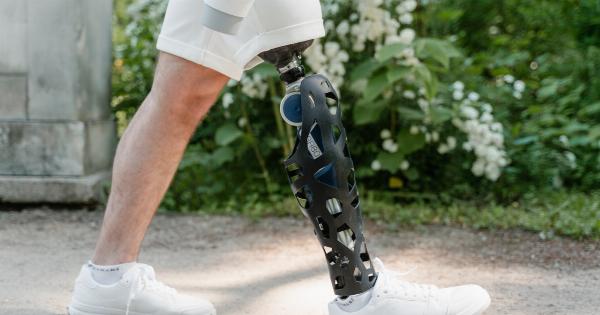Knee osteoarthritis is a common degenerative joint disease that affects millions of people worldwide. It can cause chronic pain, stiffness, and reduced mobility, making it difficult to engage in daily activities.
However, there are several ways to manage knee osteoarthritis, and walking is one of the simplest and most effective exercises to improve the condition. In this article, we will explore how walking can help improve knee osteoarthritis and provide some tips for incorporating walking into your daily routine.
Understanding Knee Osteoarthritis
Knee osteoarthritis occurs when the protective cartilage in the knee joints gradually wears away, resulting in bones rubbing against each other. This causes pain, inflammation, and stiffness.
Factors such as age, genetics, obesity, and previous knee injuries can increase the risk of developing knee osteoarthritis. While there is no cure for this condition, it can be effectively managed through various treatments, including exercise.
The Benefits of Walking for Knee Osteoarthritis
Walking offers several benefits for individuals with knee osteoarthritis:.
1. Weight Management
Obesity is a significant risk factor for knee osteoarthritis and can worsen its symptoms. Walking is a low-impact aerobic exercise that helps burn calories and aids in weight management.
By maintaining a healthy weight, the stress on your knees is reduced, relieving pain and slowing down the progression of knee osteoarthritis.
2. Strengthening Muscles
Walking engages various muscles in your legs, including the quadriceps and hamstrings, which support and stabilize the knee joints. Regular walking can strengthen these muscles, providing better stability and reducing the strain on the knee joints.
3. Improved Joint Flexibility
Walking involves repetitive motion of the knee joints, which helps improve their flexibility and range of motion. By keeping the joints active and moving regularly, walking can help combat stiffness and improve overall joint function.
4. Enhanced Cardiovascular Health
Walking is a cardiovascular exercise that gets your heart pumping and increases blood circulation.
This can promote cardiovascular health and reduce the risk of other chronic conditions such as heart disease, diabetes, and high blood pressure, which often coexist with knee osteoarthritis.
How to Incorporate Walking into Your Routine
Here are some tips to help you incorporate walking into your daily routine:.
1. Start Slowly
If you are new to walking or have severe knee osteoarthritis symptoms, it’s essential to start slow and gradually increase your walking time and distance. Begin with shorter walks and slowly build up your endurance over time.
2. Wear Appropriate Footwear
Invest in a pair of comfortable, supportive walking shoes that provide cushioning and stability for your feet and knees. Good footwear can reduce the impact on your joints and improve overall walking experience.
3. Find a Walking Buddy
Walking with a friend or joining a walking group can make your walks more enjoyable and motivate you to stay consistent. Having a supportive companion can also make the exercise feel less strenuous.
4. Warm Up and Cool Down
Before starting your walk, perform some simple warm-up exercises to prepare your muscles and joints. Afterward, incorporate cool-down stretches to improve flexibility and prevent stiffness.
5. Gradually Increase Intensity
As you build stamina and endurance, gradually increase the intensity of your walking routine. You can include intervals of brisk walking or incorporate gentle inclines to further challenge your muscles and improve cardiovascular fitness.
6. Listen to Your Body
Pay attention to any discomfort or pain during or after walking. If you experience increased pain or swelling in your knees, modify your routine or seek guidance from a healthcare professional.
7. Consider Walking Aids
For individuals with severe knee osteoarthritis, walking aids such as canes or braces may provide additional support and stability. Consult with a physical therapist or healthcare provider to determine if any walking aids are suitable for you.
Conclusion
Walking is a simple yet powerful exercise that can significantly improve knee osteoarthritis. By incorporating regular walks into your routine, you can manage symptoms, reduce pain, and enhance your overall quality of life.
Remember to start slowly, wear proper footwear, and listen to your body’s signals. With consistency and commitment, walking can become an integral part of your osteoarthritis management plan.






























